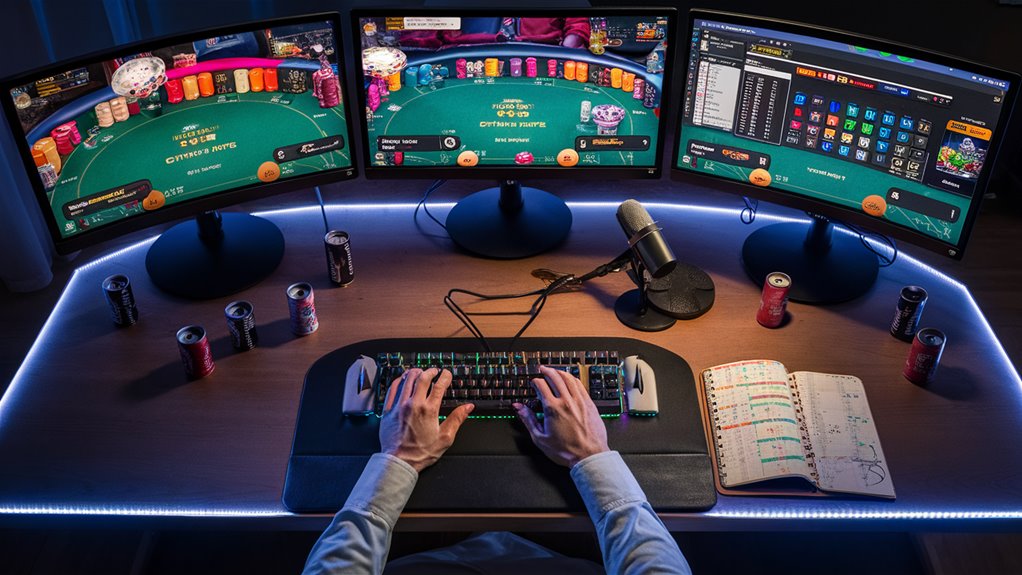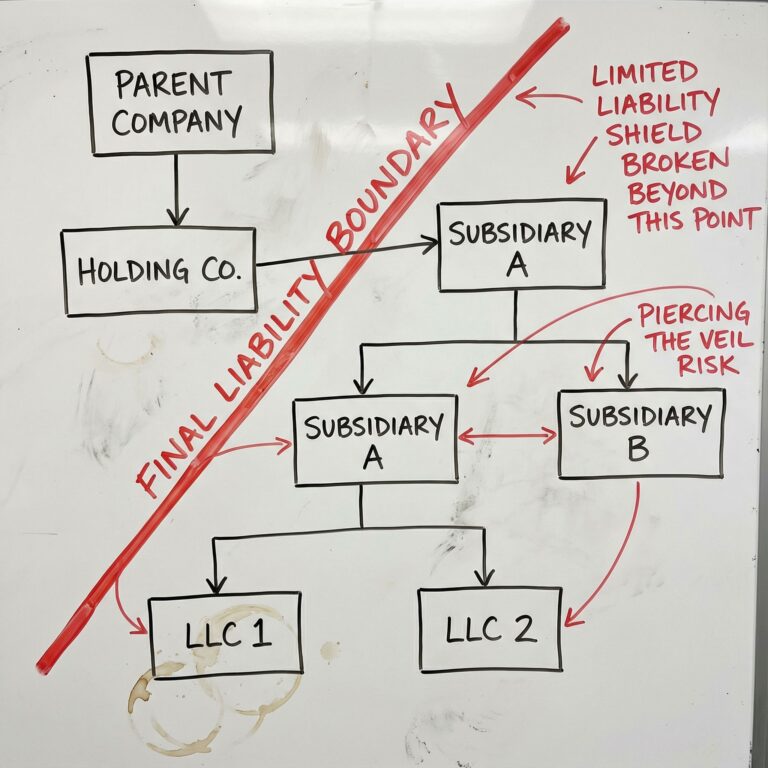
Online Poker Tournament Mastery: Advanced Strategies for No Limit Hold’em
In today’s competitive online poker landscape, mastering tournament play requires far more than basic hand selection and fundamental strategy. Through extensive experience across thousands of online tournaments, I’ve identified the crucial elements that separate elite players from average competitors.
Core Tournament Success Principles
Tournament poker excellence demands a sophisticated integration of multiple skills:
- Technical precision in hand reading and pot odds calculation
- Strategic adaptability across different stack sizes and stages
- Psychological manipulation of opponents’ decision-making processes
- Advanced ICM understanding for critical late-game situations
Key Tournament Dynamics
Successful tournament play hinges on dynamic decision-making rather than static strategies. Every choice must consider:
- Stack-to-pot ratio implications
- Tournament stage considerations
- Opponent tendencies and patterns
- Bubble dynamics and pay jump awareness
Frequently Asked Questions
Q: What’s the optimal starting hand range for early tournament stages?
A: Focus on premium holdings and strong speculative hands while maintaining 12-15% VPIP (Voluntarily Put Money In Pot).
Q: How should stack size influence decision-making?
A: Adjust aggression levels based on effective stack depths, with 20-30BB requiring increased aggression and 40BB+ allowing more strategic flexibility.
Q: When should ICM considerations override standard strategy?
A: ICM becomes crucial near bubble situations and final table pay jumps, often requiring tighter ranges than chip EV would suggest.
Q: What’s the most effective way to handle short stack play?
A: Implement a push/fold strategy with 10BB or less, focusing on spots with fold equity and maximum pressure potential.
Q: How important is position in tournament play?
A: Position becomes increasingly valuable as tournaments progress, particularly when stacks deepen and players tighten their ranges.
Through mastering these advanced concepts and maintaining strategic flexibility, players can significantly improve their tournament results and consistently reach final tables.
Preflop Hand Selection Strategy

Optimal Preflop Hand Selection Strategy in Tournament Poker
Deep Stack Strategy (50+ Big Blinds)
When operating with a deep stack of 50 big blinds or more, I implement a comprehensive range of starting hands.
This includes premium pairs, suited connectors, and small pocket pairs.
The substantial chip stack provides excellent implied odds, enabling profitable ventures with speculative hands that can potentially crack stronger holdings.
Medium Stack Adjustments (20-30 Big Blinds)
Managing a medium stack requires significant strategic adjustments. I narrow my opening range to focus on:
- Premium pocket pairs (10s and higher)
- Strong broadway hands (AK, AQ)
- Position-dependent plays
The threat of facing a 3-bet becomes particularly significant, as stack depth no longer provides favorable odds for speculative calls.
Short Stack Dynamics (Under 15 Big Blinds)
With a short stack, I transition to an efficient push/fold strategy. Key considerations include:
- Blocking effects of hole cards
- High card strength
- Position-based shoving ranges
I prioritize hands with immediate equity like:
- Any ace-high holdings
- King-queen combinations
- Pocket pairs of any strength
#
Frequently Asked Questions
Q: When should I start tightening my preflop range?
A: Begin tightening when stack depth drops below 30 big blinds, focusing primarily on premium holdings.
Q: What hands should I prioritize when short-stacked?
A: Prioritize hands with high card strength and blocking potential, such as any ace, pocket pairs, and strong broadway combinations.
Q: How does position affect short stack shoving ranges?
A: Later positions allow for wider shoving ranges due to fewer players left to act and increased fold equity.
Q: Should I ever limp with a medium stack?
A: Limping becomes significantly less viable with medium stacks; prefer raise-or-fold strategies instead.
Q: What’s the minimum stack depth for playing suited connectors?
A: Generally, maintain at least 50 big blinds to profitably play suited connectors due to implied odds requirements.
Building Effective Stack Management

Building Effective Stack Management in Tournament Poker
Understanding Stack Depths and Strategic Adjustments
Stack management forms the cornerstone of successful tournament poker strategy.
Mastering the ability to navigate different stack depths while maintaining optimal chip management directly impacts long-term tournament performance.
Deep Stack Strategy (50+ Big Blinds)
When operating with deep stacks, implementing a broader range of plays becomes viable. This stage allows for:
- Speculative hand selection with suited connectors and small pairs
- Post-flop maneuverability through position plays
- Premium hand exploitation in multi-way pots
- Controlled aggression without unnecessary risk
Medium Stack Dynamics (25-50 Big Blinds)
The middle stack phase requires precise pressure application:
- Three-bet shove opportunities against active opponents
- Stack leverage against shorter-stacked players
- Strategic restealing from late position
- ICM-aware decision making in crucial spots
Short Stack Navigation (10-25 Big Blinds)
Short stack play demands careful hand selection and timing:
- Push/fold mathematics implementation
- Range-based shoving from varying positions
- Defensive play against larger stacks
- Survival-oriented adjustments based on tournament stage
Critical Zone Strategy (Under 10 Big Blinds)
In the danger zone, focus shifts entirely to:
- Maximum fold equity exploitation
- All-in opportunities with reasonable holdings
- Tournament life preservation through selective aggression
- Bubble factor consideration in ICM situations
Frequently Asked Questions
Q: What’s the optimal stack size for three-bet shoving?
A: The ideal stack depth typically ranges between 15-25 big blinds, depending on position and opponent tendencies.
Q: How should stack size influence hand selection?
A: Deeper stacks allow for more speculative plays, while shorter stacks require tighter, high-equity holdings.
Q: When should I start playing more aggressively with a medium stack?
A: Increase aggression when stack size approaches 30 big blinds, particularly against players showing weakness.
Q: What role does position play in stack management?
A: Later position provides more opportunities for stack manipulation and pressure plays across all depth ranges.
Q: How does ICM impact stack management decisions?
A: ICM considerations become increasingly important as stacks shallow, particularly near pay jumps and final table bubbles.
Position Plays and Blind Defense

Mastering Position Plays and Blind Defense in Tournament Poker
Understanding Position Advantage
Position awareness represents a critical strategic element in tournament poker success. Late position offers significant advantages, allowing players to control pot sizes and make informed decisions with maximum information.
From the cutoff and button positions, profitable hand selection expands considerably, encompassing suited connectors, small pocket pairs, and broadway cards.
Optimal Position-Based Strategy
When operating from late position, i implement an expanded opening range that capitalizes on post-flop positional advantage.
Suited connectors (8-7s to J-Ts) and pocket pairs (22-99) become particularly valuable as they offer strong implied odds and post-flop maneuverability.
The ability to act last on all streets enables precision bet sizing and enhanced bluff opportunities.
Advanced Blind Defense Techniques
Blind defense strategy requires sophisticated adjustment based on multiple factors:
- Opponent’s raising position
- Stack depth considerations
- Tournament stage implications
- Player tendencies and patterns
Against early position raises, implement a tighter defending range, focusing on premium hands and strong suited connectors. Versus late position aggression, especially button raises, expand the defending range to prevent exploitation while maintaining pot control.
Stack-Based Adjustments
Deep stack play in early tournament stages permits more speculative calls from the blinds, particularly with suited connectors and small pairs.
As stacks shallow, transition to a polarized three-bet or fold strategy, eliminating marginal calling ranges that compromise stack flexibility.
#
Frequently Asked Questions
Q: What percentage of hands should i defend from the big blind?
A: Defend approximately 40-50% against late position raises, reducing to 25-30% versus early position opens.
Q: When should i three-bet rather than call in blind defense?
A: Three-bet with premium hands and select bluffs when stacks are 25-40 big blinds deep.
Q: How does position affect continuation bet success?
A: Late position continuation bets succeed more frequently due to enhanced fold equity and information advantage.
Q: What stack depth is optimal for blind defense?
A: 40+ big blinds allows optimal blind defense with complete strategic flexibility.
Q: How should i adjust blind defense versus aggressive players?
A: Tighten calling ranges and increase three-bet frequency, particularly with strong hands.
ICM Fundamentals at Final Tables

ICM Fundamentals at Final Tables: Advanced Tournament Poker Strategy
Understanding ICM Dynamics in Tournament Poker
Independent Chip Model (ICM) calculations become paramount when navigating final table scenarios in tournament poker.
Tournament chip values differ significantly from their nominal amounts, fundamentally altering optimal decision-making processes at crucial stages.
Adjusting Ranges Based on Stack Size
Chip Leader Strategy
Big stack advantages enable aggressive exploitation of ICM pressure against shorter stacks.
As the chip leader, implementing a wider opening range and increased aggression maximizes leverage against opponents forced to make ICM-conscious folds.
Medium and Short Stack Tactics
Conservative adjustment becomes essential when playing with a vulnerable stack size.
Medium stacks must carefully balance preservation of chips with accumulation opportunities, while short stacks require precise push-fold decisions based on ICM considerations.
Critical ICM Calculations
Using ICM Calculators
Advanced preparation through ICM calculator analysis provides crucial insights for common final table scenarios. Key situations include:
- Push-fold dynamics between varying stack sizes
- Bubble considerations with significant pay jumps
- Risk-reward evaluation in multi-way pots
Pay Jump Analysis
Prize distribution impact requires detailed understanding of:
- Stack-to-prize ratios
- Position relative to pay jumps
- Risk premium calculations for marginal situations
Frequently Asked Questions
Q: When should ICM considerations override raw equity calculations?
A: ICM takes precedence when significant pay jumps are approaching and stack preservation becomes more valuable than chip accumulation.
Q: How does ICM affect short stack strategy?
A: Short stacks must tighten their calling ranges substantially, often folding traditionally strong hands when facing elimination.
Q: What factors influence ICM pressure?
A: Stack sizes, prize structure, number of players remaining, and relative position to pay jumps all contribute to ICM pressure.
Q: Should chip leaders always apply maximum ICM pressure?
A: While aggressive exploitation is generally correct, careful consideration of stack preservation remains important for maintaining chip leader status.
Q: How does bubble play differ under ICM considerations?
A: Bubble situations amplify ICM pressure, requiring tighter calling ranges and more selective aggression, particularly from players at risk of elimination.
Exploiting Tournament Player Types

Mastering Tournament Poker Player Types: A Complete Exploitation Guide
Understanding Core Player Archetypes
Tournament poker success depends heavily on identifying and exploiting player tendencies.
Through extensive analysis and experience, I’ve identified four primary player types that appear consistently across all tournament levels.
The Overly Cautious “Nit”
Nits represent prime exploitation targets due to their extremely tight playing style. Key exploitation strategies include:
- Aggressive blind stealing
- Consistent isolation raises
- ICM pressure application in crucial bubble situations
- Small-ball poker when they show aggression
The Hyper-Aggressive “Maniac”
Aggressive maniacs provide substantial profit opportunities through their excessive bluffing tendencies. Optimal counterstrategies include:
- Wider calling ranges
- Reduced 3-betting frequencies
- Stack preservation in marginal spots
- Trap-heavy approach with premium holdings
The ABC Player
ABC players follow standardized patterns that create predictable scenarios. Exploitation methods focus on:
- Mixed sizing strategies
- Light 3-betting in position
- Pressure points during transitional stack depths
- Exploitative blind defense
The Professional Player
Professional players require subtle exploitation approaches targeting specific tendencies:
- Frequency analysis of common situations
- Stack depth manipulation
- Hero call identification
- Dynamic adjustment recognition
Advanced Exploitation Techniques
Success requires continuous adjustment based on:
- Tournament stage
- Stack depth ratios
- Table dynamics
- Player fatigue levels
- Previous hand history
Frequently Asked Questions
Q: How quickly should I adjust my strategy against different player types?
A: Implement changes gradually over 15-20 hands to confirm patterns before full exploitation.
Q: What stack depth is optimal for exploiting nits?
A: Target nits when they’ve 20-30 big blinds, maximizing their bubble pressure concerns.
Q: How do I protect against counter-exploitation?
A: Maintain balanced ranges while implementing exploitative adjustments selectively.
Q: Which player type is most profitable to exploit?
A: Nits typically offer the highest EV through blind stealing and bubble pressure.
Q: When should I abandon exploitation for a balanced approach?
A: Switch to balanced play when opponents demonstrate active adjustment capabilities.
Mental Game and Tilt Control

Mastering the Mental Game: Expert Tilt Control in Poker
The Critical Role of Mental Stability in Tournament Success
Mental game management stands as the fundamental cornerstone of poker excellence, yet many players underestimate its significance while focusing exclusively on technical aspects.
Through extensive tournament experience, i’ve witnessed numerous skilled players sabotage their potential due to inadequate emotional control during challenging situations.
Implementing Effective Mental Game Strategies
Pre-Game Preparation
i recommend establishing a structured pre-tournament routine incorporating:
- Mindfulness meditation sessions
- Deep breathing exercises
- Mental state assessment
- Goal-setting practices
Table-Side Mental Management
During active play, maintain focus on decision quality rather than immediate results.
Variance acceptance proves crucial – understanding that bad beats and coolers represent natural poker elements rather than personal affronts.
Advanced Tilt Control Techniques
The Stop-and-Breathe Method
When experiencing tilt symptoms, implement the three-breath technique:
- Pause all action
- Take three controlled deep breaths
- Mentally reset focusing on optimal decision-making
Tilt Pattern Recognition
Maintain a detailed tilt diary documenting:
- Specific trigger situations
- Emotional responses
- Performance impact
- Recovery strategies
Professional Bankroll Protection Strategies
Setting Clear Boundaries
- Establish non-negotiable stop-loss limits
- Document maximum session durations
- Create clear exit criteria for emotional play
- Implement strict adherence protocols
FAQ Section
Q: How can i identify early tilt symptoms?
A: Monitor physical signs like increased heart rate, agitation, or rushed decisions.
Q: What’s the most effective immediate tilt control method?
A: The stop-and-breathe technique provides immediate emotional regulation.
Q: How long should i take a break after experiencing tilt?
A: minimum 30-minute break to reset mental state and evaluate triggers.
Q: Can meditation really improve poker performance?
A: Yes, regular meditation enhances focus, decision-making, and emotional control.
Q: What’s the relationship between bankroll management and tilt control?
A: Proper bankroll management reduces financial pressure, decreasing tilt susceptibility.
Satellite Tournament Tactics

Mastering Satellite Tournament Poker Strategy
Fundamental Principles of Satellite Success
Satellite tournament strategy requires a fundamentally different approach compared to standard tournaments.
The primary objective isn’t to accumulate all chips but to secure a 먹튀검증 qualifying position.
Success depends on maintaining an optimal stack size while avoiding unnecessary risks, particularly near the bubble phase.
Early Stage Tactics
Implementing tight-aggressive poker during initial levels proves crucial for building a sustainable stack. Focus on:
- Premium hand selection
- Position-based aggression
- Conservative chip management
Once achieving approximately 1.5x the average stack, transition to a more protective strategy, even declining to play traditionally strong hands that might risk significant portions of your stack.
Bubble Phase Strategy
Stack Size Considerations
- Large Stack: Avoid confrontations with similarly sized stacks; target shorter stacks who can’t defend
- Medium Stack: Maintain extremely selective hand ranges; defend against aggressive larger stacks
- Short Stack: Identify opportunities against other short stacks rather than engaging chip leaders
Strategic Stack Management
Stack awareness becomes paramount near qualification spots. Successful satellite players continuously adjust their approach based on:
- Current stack size relative to average
- Number of players remaining
- Distance from qualification spots
- Pressure points from varying stack sizes
## Frequently Asked Questions
Q: What’s the optimal stack size to aim for in satellites?
A: Target 1.5x the average stack, which provides sufficient buffer without unnecessary risk exposure.
Q: When should I start playing more conservatively?
A: Upon reaching 1.5x average stack or approaching the bubble phase, whichever comes first.
Q: How should I handle premium hands near the bubble?
A: Consider folding premium hands if playing them risks your qualification spot, especially against other strong stacks.
Q: What’s the biggest difference between satellite and regular tournament strategy?
A: Satellites focus on securing qualification rather than accumulating maximum chips.
Q: How should short stacks approach the bubble phase?
A: Target other short stacks for double-up opportunities while avoiding confrontations with chip leaders.
Common Questions
How Can I Maximize Rakeback Deals When Playing Multiple Online Poker Tournaments?
Maximizing Rakeback Deals in Online Poker Tournaments
Essential Rakeback Optimization Strategies
To maximize rakeback earnings across multiple online poker tournaments, I recommend implementing these proven optimization techniques:
Peak Period Optimization
- Target promotional periods with enhanced rakeback rates
- Focus on high-traffic hours when tournaments offer maximum value
- Participate in special event series with boosted rakeback percentages
Multi-Site VIP Program Management
- Strategically distribute volume across different poker sites
- Track VIP level progress on each platform
- Synchronize status requirements to maintain optimal tier levels
Volume Management and Analysis
- Maintain consistent playing schedules
- Use advanced tracking software to monitor rake generation
- Implement systematic bankroll management across platforms
Advanced Rakeback Optimization Tools
Rakeback Calculators
- Monitor real-time earnings across all sites
- Compare effective rakeback rates
- Calculate projected monthly returns
Performance Metrics
- Track rake-to-time ratio
- Analyze tournament ROI with rakeback included
- Monitor milestone progress for bonus unlocks
FAQ Section
Q: What is the optimal number of sites for rakeback maximization?
A: Focus on 2-3 major sites to maintain sufficient volume for VIP status while maximizing rewards.
Q: How often should I review rakeback deals?
A: Conduct monthly reviews of rakeback rates and quarterly assessments of site profitability.
Q: What’s the minimum volume needed for profitable rakeback?
A: Aim for at least 5,000 hands monthly per site to achieve meaningful rakeback returns.
Q: Are rakeback deals better for cash games or tournaments?
A: Tournament rakeback often provides better value due to higher rake structures and series promotions.
Q: Should I prioritize rakeback over game selection?
A: Game selection should remain primary, with rakeback optimization as a secondary consideration.
What Computer Setup and Software Tools Are Recommended for Multi-Tabling Tournaments?
Optimal Computer Setup for Multi-Table Tournament Poker
For serious multi-table poker tournaments, I recommend a comprehensive hardware and software setup that maximizes efficiency and performance:
Essential Hardware Components
- Dual 27-inch monitors (minimum 2560×1440 resolution)
- High-performance CPU (Intel i7/Ryzen 7 or better)
- 16GB RAM (32GB recommended for maximum stability)
- Solid State Drive (NVMe SSD for instant table loading)
- Gaming-grade mouse with programmable buttons
- Ergonomic mechanical keyboard
Critical Software Tools
- Hold’em Manager 3 or PokerTracker 4 for hand tracking and analysis
- Table Ninja or Stack and Tile for automated table management
- Table Scanner for tournament lobby optimization
- Screen capture software for hand history review
- Internet connection monitoring tools
Workspace Optimization
- Ergonomic gaming chair with lumbar support
- Adjustable desk (standing desk recommended)
- Dedicated ethernet connection (100Mbps minimum)
- UPS backup power supply
- LED lighting for reduced eye strain
FAQ
Q: What’s the minimum internet speed needed?
A: 100Mbps download/20Mbps upload with less than 50ms ping.
Q: How many tables can this setup handle?
A: Up to 24 tables simultaneously with optimal performance.
Q: Is a gaming PC necessary?
A: While not mandatory, gaming-grade components ensure smoother performance.
Q: Which tracking software is better?
A: Both Hold’em Manager 3 and PokerTracker 4 are industry standards.
Q: Can I run this setup on a laptop?
A: Yes, but a high-performance gaming laptop is recommended for optimal results.
How Do Cryptocurrency Withdrawals and Deposits Affect Online Poker Tournament Scheduling?
Impact of Cryptocurrency Transactions on Online Poker Tournament Scheduling
Cryptocurrency transactions significantly influence online poker tournament participation and scheduling. Understanding the timing of deposits and withdrawals is crucial for optimal tournament planning.
Deposit Processing Times
Cryptocurrency deposits typically clear instantly or within minutes on most major poker platforms. This allows players to:
- Enter tournaments immediately after successful deposits
- Register for upcoming events without delay
- Take advantage of last-minute tournament opportunities
Withdrawal Considerations
Cryptocurrency withdrawals generally don’t impact tournament scheduling because:
- Withdrawals process independently of tournament registration
- Players maintain separate bankroll management
- Tournament buy-ins are secured upon registration
Best Practices for Tournament Planning
- Verify deposit confirmation times specific to each cryptocurrency
- Allow buffer time before tournament start times
- Check platform-specific policies for transaction processing
- Monitor blockchain network congestion that may affect deposit speed
Common Cryptocurrency Transaction Questions
Q: How long do crypto deposits take to clear for tournaments?
A: Most cryptocurrency deposits clear within minutes, allowing immediate tournament entry.
Q: Do withdrawal requests affect tournament registration?
A: No, pending withdrawals don’t impact tournament participation or scheduling.
Q: Which cryptocurrencies process fastest for poker deposits?
A: Bitcoin Lightning Network and certain altcoins offer near-instant confirmation times.
Q: Can I register for tournaments before my deposit confirms?
A: Most platforms require confirmed deposits before tournament registration.
Q: What happens if my deposit delays during tournament registration?
A: Late deposit confirmation may result in missed registration windows, so plan accordingly.
Which Poker Training Sites Offer the Best Tournament-Specific Coaching Programs?
Best Poker Tournament Training Sites: Expert Analysis
Premier Tournament Training Platforms
Run It Once stands out as a leading tournament poker training platform, featuring an extensive curriculum taught by renowned professionals like Phil Galfond. The site offers structured learning paths specifically designed for tournament play, including:
- Advanced ICM concepts
- Final table strategy
- Satellite qualification tactics
- Multi-table tournament (MTT) specific plays
Upswing Poker delivers comprehensive tournament instruction through their Tournament Master Class, providing:
- In-depth preflop charts
- Late-stage tournament dynamics
- Progressive knockout strategy
- Professional-level ICM calculations
Raise Your Edge specializes in modern tournament strategy with:
- GTO-based approach to tournament play
- Advanced software integration
- Extensive hand history reviews
- Live coaching sessions
Advanced Training Features
Video Content Library
- Categorized strategy sessions
- Real-time analysis of major tournaments
- Interactive quizzes and assignments
- Regular content updates
Professional Coaching
- One-on-one mentoring options
- Group coaching sessions
- Live play reviews
- Tournament preparation workshops
## Frequently Asked Questions
Q: Which training site is best for beginners?
A: Run It Once offers the most accessible entry-level tournament content while maintaining advanced options for progression.
Q: How much do poker training sites cost monthly?
A: Pricing ranges from $29-99 monthly, with premium tiers offering additional features and personal coaching.
Q: Are these sites suitable for live tournament players?
A: Yes, all three platforms cover strategies applicable to both online and live tournament formats.
Q: Do these sites offer mobile access?
A: Each platform provides mobile-optimized content accessible through smartphones and tablets.
Q: How often is training content updated?
A: Content updates occur weekly to monthly, ensuring strategies remain current with evolving tournament meta-game.
How Do Different Time Zones Impact Major Online Tournament Series Scheduling?
Time Zone Impacts on Major Online Tournament Scheduling
The complex interplay of global time zones fundamentally shapes how major online tournament series are scheduled and operated. Tournament organizers must carefully balance peak playing hours across multiple regions to ensure fair competition and maximum participation.
Regional Tournament Windows
Prime competitive windows vary significantly across major gaming regions:
- European Peak Times: 18:00-23:00 CET
- North American Peak Times: 16:00-22:00 EST/PST
- Asian Peak Times: 19:00-24:00 KST/JST
Strategic Scheduling Solutions
Tournament organizers implement several key strategies to address time zone challenges:
- Round-the-clock brackets allowing regional qualifiers
- Staggered start times for different competitive divisions
- Region-locked preliminary rounds leading to international finals
- Multiple broadcast windows reaching different time zones
Impact on Tournament Structure
Time zone considerations directly influence:
- Bracket design and progression
- Stream scheduling for maximum viewership
- Player rest periods between matches
- Server selection for cross-regional play
Q&A Section
Q: How do tournaments handle cross-region matches?
A: Tournaments typically schedule cross-region matches during overlap hours that accommodate both regions, often using neutral servers to balance latency.



